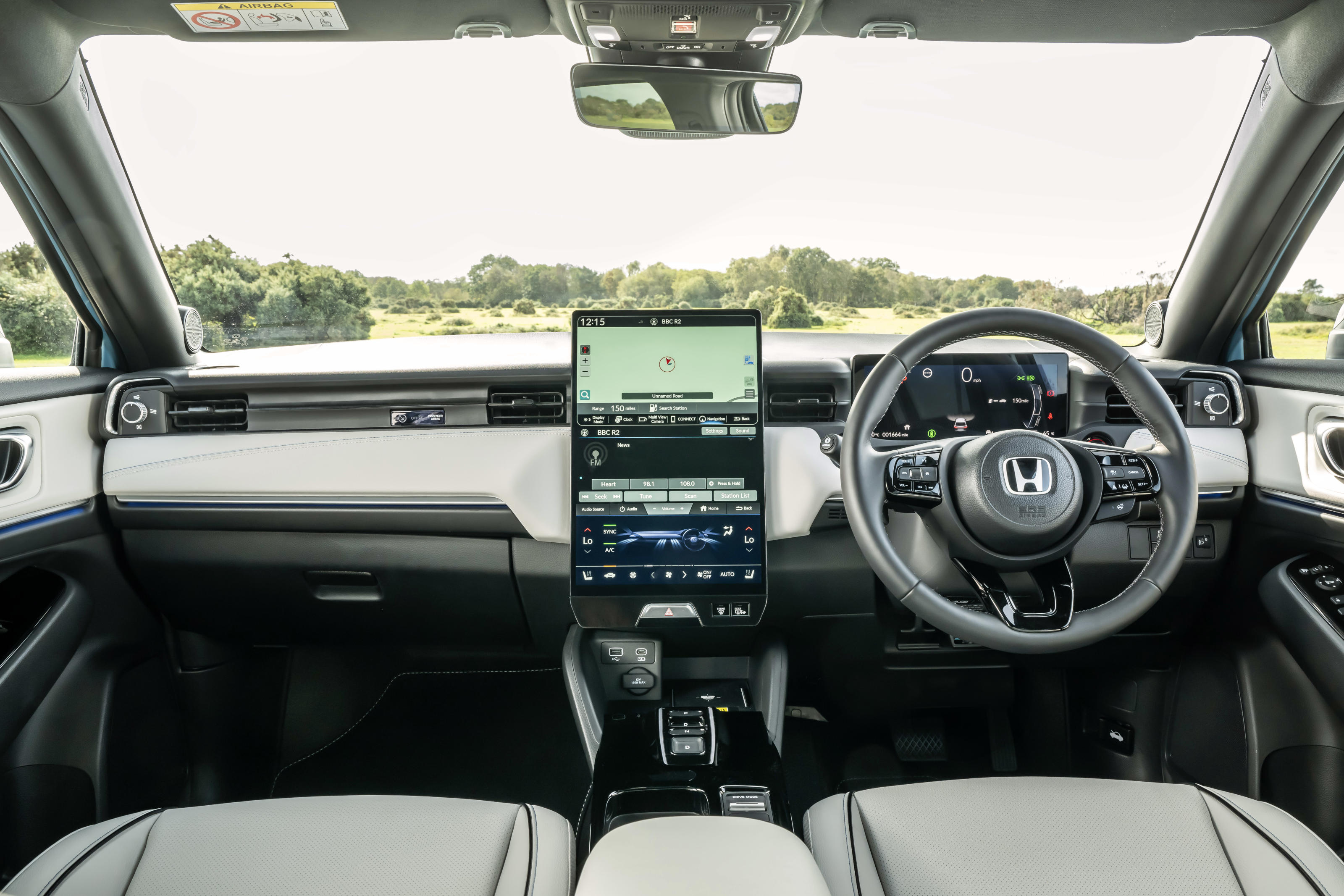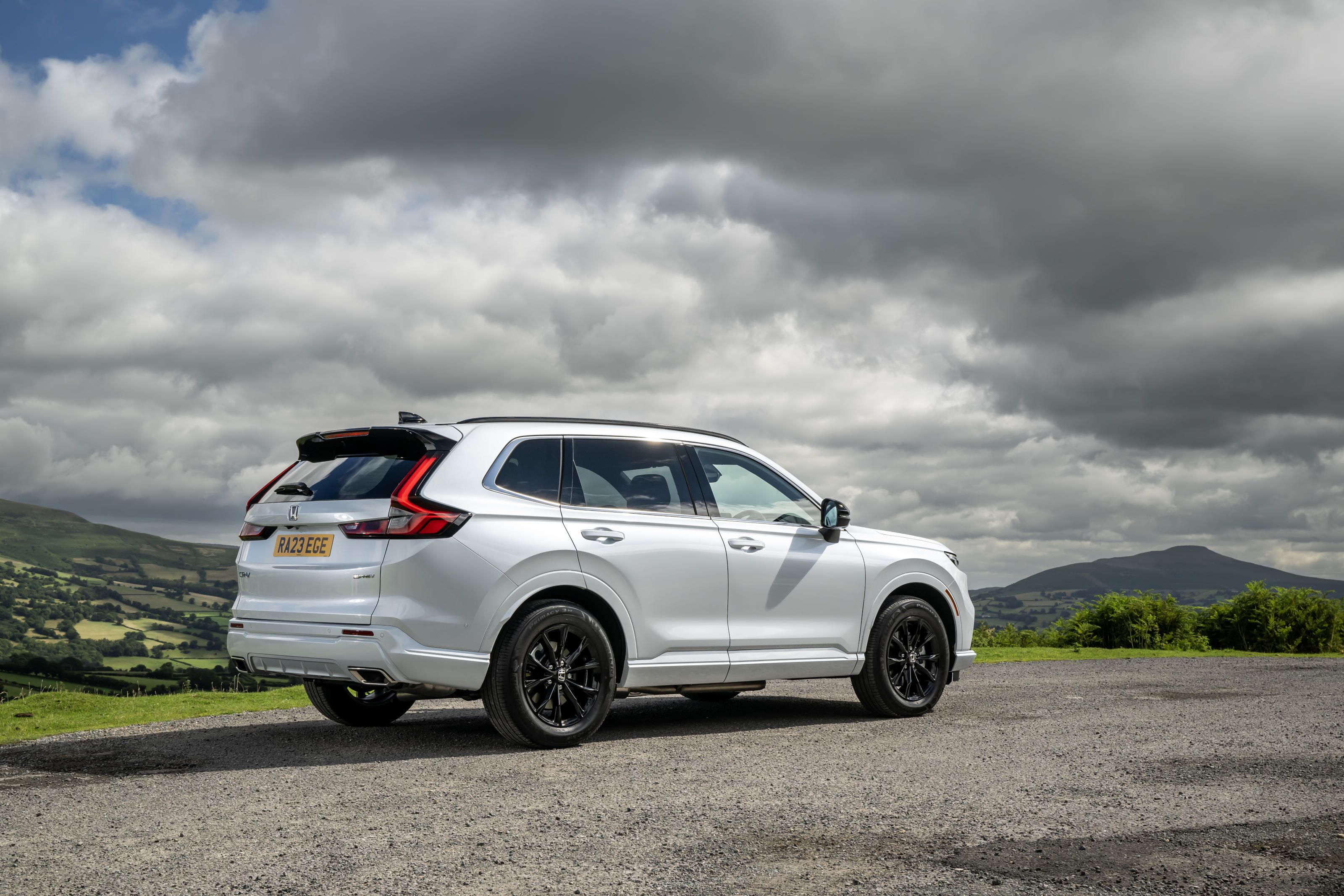New Honda EV, the e:Ny1, hits the road as the shape of modern electrification
Honda, a car-making giant that made a slow start in electric cars, is hoping the e:Ny1 will accelerate its future prospects

What are we to make of the fact that the new Honday e:Ny1 is only the second all-electric Honda to make it to Europe? Honda sits comfortably within the top ten largest global car companies. Founded in 1946, the company built 3.8 million cars in 2022. The first Honda EV? The mighty but commercially ineffective Honda e, one of our favourite electric cars to date.

Honda e:Ny1 electric SUV
In hindsight, the diminutive e’s flaws far outweighed its hefty price tag, most notably its tiny range. But as a proof of concept it was unrivalled, demonstrating that this industrial behemoth had design chops that were up there with the best of them. Honda announced that the e won’t survive to see a second generation, practically guaranteeing it future cult status.
Honda is all about big numbers. With a product range that spans cars, motorbikes, outboard motors, ATVs, robots and private jets, as well as a good deal more, there’s no doubting Honda’s expansive skillset. This makes the firm’s tentative toe dip into electrification all the more puzzling. The company is still deeply committed to hydrogen fuel cells, a technology it has been persisting with for a quarter of a century without a convincing commercial case.
e:Ny1: a Honda EV for the masses

Honda e:Ny1 electric SUV
In comparison, a Honda EV for the masses should be an easy win. The company hopes that this is it, the new Honda e:Ny1. Entering into the popular (and possibly oversubscribed) compact electric SUV market sector, the cumbersomely named Honda e:Ny1 has a light sheen of innovation, both in terms of the smooth, unthreatening design language, and in its internal tech and instrumentation.
First impressions are of a visually clean and physically friendly design – Honda tends not to give its cars any kind of aggressive or overheated styling. The rear end slopes steeply, reducing the overall visual bulk but also reducing practicality, culminating in a neat rear end bearing the word ‘Honda’ in lieu of a badge, a first for the company and a way of giving the brand recognition a bit of a leg up.

Honda e:Ny1 electric SUV
At front, the typical grille has been replaced with a hatch for the charge point, and whilst the bonnet is long and conventionally located, there’s no accessible storage underneath it, just running gear for the 68.8kWh battery. That gives a maximum range of 256 miles, firmly mid table but also still acceptable. Progress is made via Eco, Normal and a brisk Sport mode, which gives the e:Ny1 a nicely balanced ride and eager acceleration.

Honda e:Ny1 electric SUV interior
Inside, there’s a big central screen, sub-divided into three sections for entertainment, navigation and climate control. Switchgear, materials and storage niches are a bit scattered and fussy, but the overall perceived quality is robust and functional. Piped faux leather seats add a touch of class, and the folding rear seats make for a practical furniture mover.
Wallpaper* Newsletter
Receive our daily digest of inspiration, escapism and design stories from around the world direct to your inbox.

Honda e:Ny1 electric SUV interior
The company admits this is an EV for the first-time buyer, someone who might be a little wary of the EV world. To mollify them, there’s a bunch of generous servicing and warranty options, as well as ‘intelligent charging’ system, wherein Honda helps optimise home charging for both the cheapest electricity tariffs and the greenest ones.

Honda CR-V
In the UK, EVs are the fastest-growing market sector, up 33 per cent year on year. Honda also revealed the latest version of its CR-V, the seventh, a car that began life in 1995 as the company’s very first SUV. Pitched at both the freeways of LA and the country lanes of Kent, the CR-V has never been a looker, more of a do-everything world car that sets out to be all things to all people. As a result, it needs to fall into the average car buyer’s most ticked box, the mid-sized SUV (which now accounts for over 50 per cent of the UK car market).

Honda CR-V
In nearly 30 years of evolution, the CR-V has grown larger, somewhat more aggressive in its styling and more generous in its specification. There’s 50 miles of battery-only range in the flagship 4WD plug-in hybrid (the only alternative is a 2WD conventional hybrid) and clever functions like sliding rear seats signal that this is a family workhorse above all else. The neat rear end and pronounced wheel arches are countered by an awkward ‘face’ with its jutting low spoilers: this is a big car, not pitched at urban drivers.

Honda CR-V
In the UK, 13 out of 20 cars sold are SUVs. As a result, any cautious carmakers venturing into the world of electrification will start with this tried and tested format before anything else. Smaller SUVs – like the Honda e:Ny1 – have therefore become the modern equivalent of the original compact hatchback, despite the increase in bulk. Not until electrification is complete and batteries have shrunk can we expect to see smaller vehicles on our roads.

Honda e:Ny1 electric SUV
Honda CR-V starts at £45,895, rising to £53,995 for the Advance Tech PHEV model
Honda e:Ny1, £44,995 for the simplest Elegance spec, £47,195 for the Advance model, Honda.co.uk
Jonathan Bell has written for Wallpaper* magazine since 1999, covering everything from architecture and transport design to books, tech and graphic design. He is now the magazine’s Transport and Technology Editor. Jonathan has written and edited 15 books, including Concept Car Design, 21st Century House, and The New Modern House. He is also the host of Wallpaper’s first podcast.
-
 Put these emerging artists on your radar
Put these emerging artists on your radarThis crop of six new talents is poised to shake up the art world. Get to know them now
By Tianna Williams
-
 Dining at Pyrá feels like a Mediterranean kiss on both cheeks
Dining at Pyrá feels like a Mediterranean kiss on both cheeksDesigned by House of Dré, this Lonsdale Road addition dishes up an enticing fusion of Greek and Spanish cooking
By Sofia de la Cruz
-
 Creased, crumpled: S/S 2025 menswear is about clothes that have ‘lived a life’
Creased, crumpled: S/S 2025 menswear is about clothes that have ‘lived a life’The S/S 2025 menswear collections see designers embrace the creased and the crumpled, conjuring a mood of laidback languor that ran through the season – captured here by photographer Steve Harnacke and stylist Nicola Neri for Wallpaper*
By Jack Moss
-
 The 2024 Goodwood Festival of Speed hosted a wealth of auto innovation, from hypercars to hot hatches
The 2024 Goodwood Festival of Speed hosted a wealth of auto innovation, from hypercars to hot hatchesThe best new SUVs, EVs, hatchbacks and supercars to emerge from the 2024 Goodwood Festival of Speed
By Jonathan Bell
-
 CES 2024 was a showcase for how to shoehorn AI into next-generation cars
CES 2024 was a showcase for how to shoehorn AI into next-generation carsCES 2024 in Las Vegas underlined that future mobility will be shaped by AI, like it or not, as intelligent assistants emerge to guide, plan and converse with their human cargo
By Jonathan Bell
-
 The debut Japan Mobility Show saw the country’s carmakers preview the near future
The debut Japan Mobility Show saw the country’s carmakers preview the near futureThe 2023 Japan Mobility Show offered up a vast array of futuristic transportation, from concept sports cars to autonomous taxis, and eVTOL aircraft
By Jonathan Bell
-
 Development news from Honda’s Japan HQ
Development news from Honda’s Japan HQBy Nargess Banks
-
 Honda Insight Hybrid
Honda Insight HybridBy Jonathan Bell